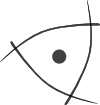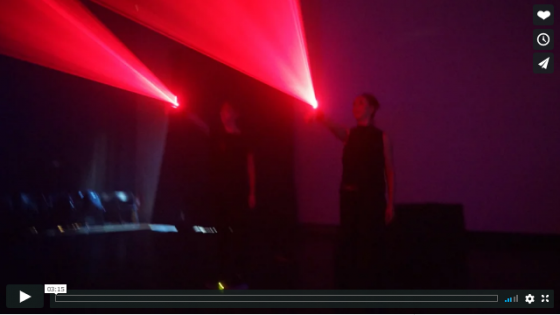
The EyesWeb Project
EyesWeb is an open software research platform for the design and development of real-time multimodal systems and interfaces.
Description
EyesWeb is an open platform to support the design and development of real-time multimodal systems and interfaces. It supports a wide number of input devices including motion capture systems, various types of professional and low cost videocameras, game interfaces (e.g., Kinect, Wii), multichiannel audio input (e.g. microphones), analog inputs (e.g. for physiological signals). Supported outputs include multichannel audio, video, analog devices, robotic platforms. Various standards are supported, including OSC, MIDI, FreeFrame and VST plugins, ASIO, Motion Capture standards and systems (Qualisys), Matlab. EyesWeb supports real-time synchronized recordings of multimodal channels, and includes a number of software libraries, including the Non-Verbal Expressive Gesture Analysis and the Non-Verbal Social Signals Analysis libs. Users can develop proprietary software libs using the EyesWeb development environment. The EyesWeb software includes a development environment, a distributed run-time system (supporting Windows, Linux, and mobile platforms) to create distributed or networked real-time applications, and an open set of libraries of reusable software components. The development environment supports the design process of multimodal interactive systems, enabling users to build systems by means of a visual programming language, which presents some analogies with computer music languages inspired to analog synthesizers or to software systems like Simulink. EyesWeb is conceived, designed and developed by InfoMus Lab. The EyesWeb project started in 1997, as a natural evolution of the HARP Project. The current release of the open software platform is EyesWeb XMI (eXtended Multimodal Interaction). The EyesWeb software platform has been adopted in EU projects in the 5th, 6th and 7th Framework Programme (ICT), and by thousands of users worldwide for scientific research, education, and industry applications. For example, EyesWeb was selected by INTEL in 2008 for their hardware for "independent living", and was adopted at the New York University Summer Program on "Music, dance and new technologies" (2004 - 2006).
Latest EyesWeb's Community Works
- Open Closed Open
In collaboration with Liat Grayver, Yair Kira and Amir Shpilman
Awarded the first DAGESH Art Prize, Jewish Museum Berlin 2019
"Open, Closed, Open" is a multimedia installation that explores a multitude of perceptual positions realized as a result of the continual movement of organic materials. Sand, light and human voice are shaped by a layer of technological interventions that impose varying degrees of control and predetermined roles upon both themselves and the resulting response of the materials.
- Two Pandoras
A thin membrane between resiliency and fragility

Experimental performance for the European WhoLoDancE project presentation,
RomaEuropa Festival, Rome, Italy, October 7, 2018
Collaboration K. Danse (Toulouse, France k-danse.net)- Instituto Stocos (Madrid, Spain stocos.com)
Technologies for real-time movement analysis: Casa Paganini - InfoMus and Instituto Stocos.
Interactive Laser technology: Instituto Stocos.
- Choreographers: Muriel Romero and Jean-Marc Matos
- Dancers: Muriel Romero and Marianne Masson
- Music and sound synthesis: Pablo Palacio
-
Myselves
from matos jean-marc, holst anne
An interactive choreographic performance, stages a dialog between a dancer and her multiple selves, embodied in an autonomous and unpredictable visual and aural creature, which emanates from her psyche as interpreted by optical and body sensors.
Collaboration on the technology: Research Center Casa Paganini - InfoMus, Dir. Antonio Camurri. Automatic analysis of movement qualities made with the EyesWeb platform.
- Jean-Marc Matos: co concept, choreography
- Marianne Masson: co concept, co choreography, dance
- Antoine Schmitt: co concept, interactive visual and aural creation antoineschmitt.com
- Sound design: Antoine Schmitt & Jean-Marc Matos
- Music: Robert Crouch, Ipek Gorgun, Nils Frahm, Franck Vigroux, Daniel Brandt, Hauschka, Klara Lewis & Simon Fisher Turner, Biosphere
- Lights: Fabien LeprieultCostumes: Benjamin Haegel
-
Europa: Gesture of History - Dancing Science and Art not to forget EU identity"
Europa:Gesture of History, is a scientific performance in Rome (March 23th 2017).
This performance took place in occasion of the dinner at the celebration of the Treaty of Rome, at "La Lanterna" in Rome, on invitation by the EU DG Connect.
The objective was to tell metaphorically the narration of the birth and evolution of Europe by means of a short choreographic action, enhanced by an interactive sonification amplifying the qualities of dancer's movement.
DANCE EU Project Performance/Showcase
Giulia Mureddu, dance
Virgilio Sieni and Giulia Mureddu, choreography
Andrea Cera, sonic design
Stefano Piana, software for real-time analysis of movement qualities
A project of Casa Paganini-InfoMus Research Centre, DIBRIS-University of Genoa, coordinated by Antonio Camurri
This project has received funding from the European Union's Horizon 2020 research and innovation programme under grant agreement No 645553
-
Andrea Cera's works with analysis of movement.
Excerpts from his works based on analysis of movement and the use of EyesWeb.
The YouTube InfoMusLab Channel
Our YouTube channel is available at the following link